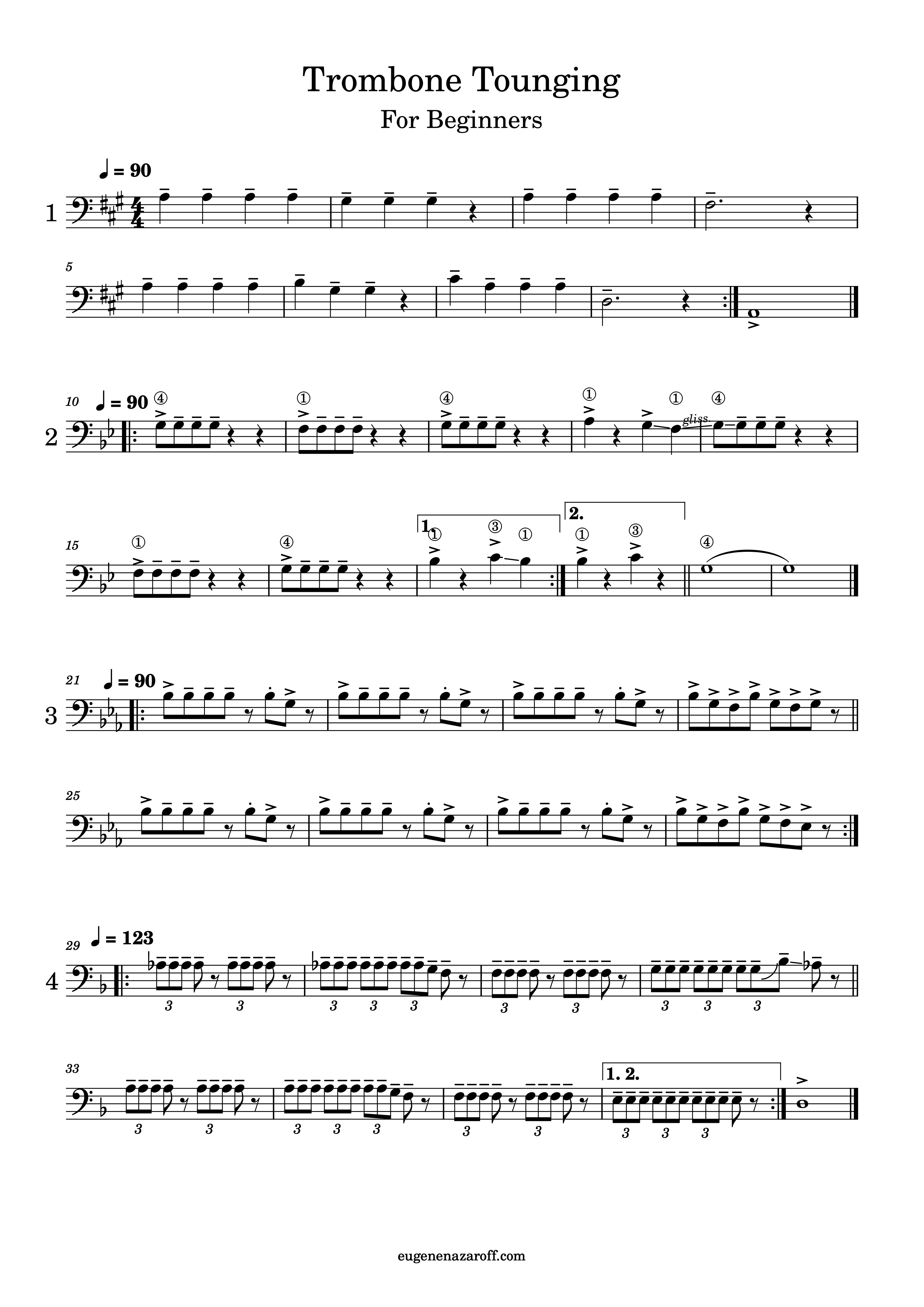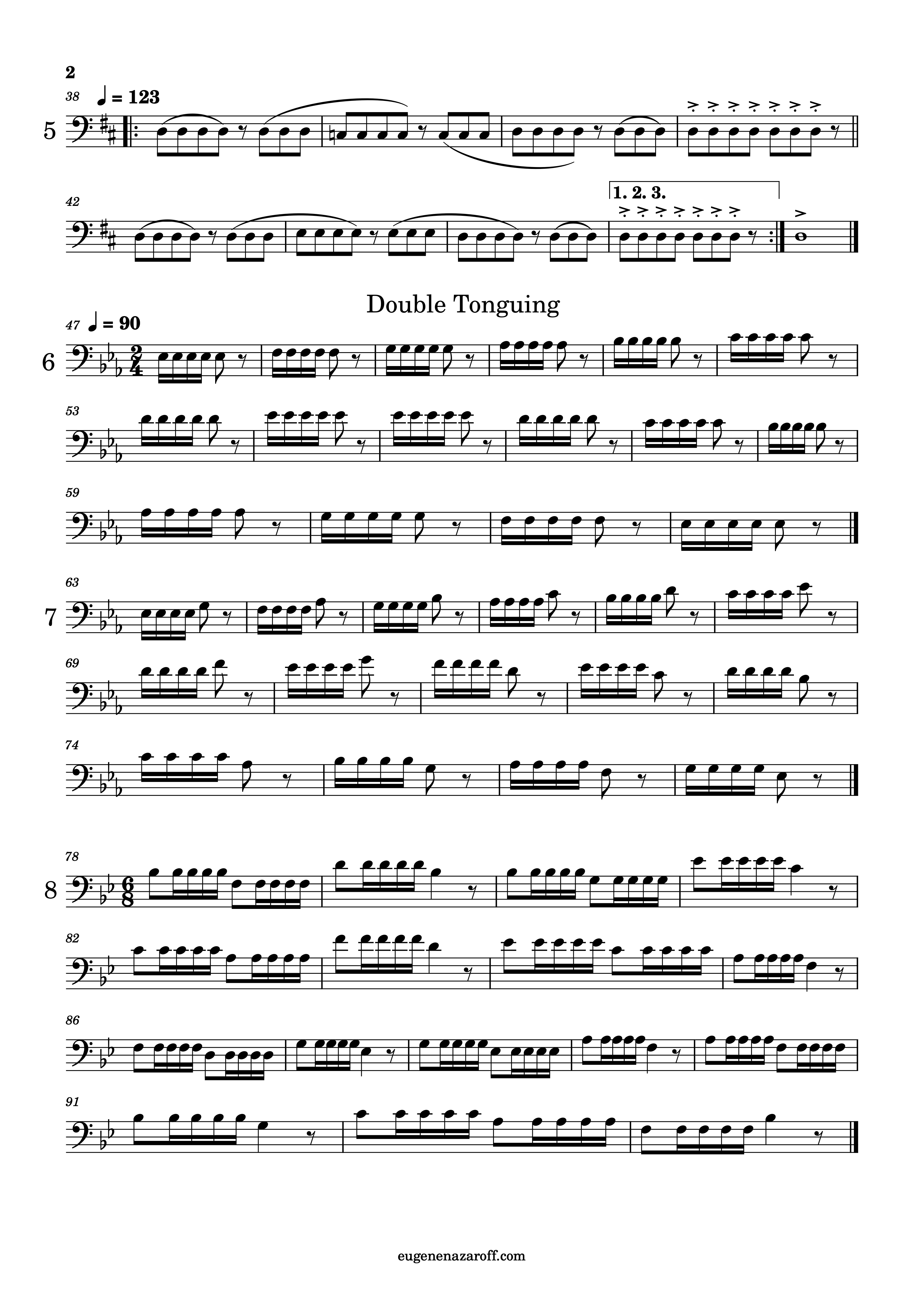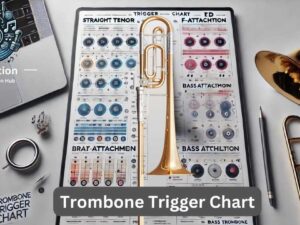8 Trombone Tonguing Exercises For Beginners — Master Essential Techniques Fast
Original price was: $0.65.$0.00Current price is: $0.00.
Unlock your trombone potential with our comprehensive guide to tonguing techniques. Perfect for beginners, these 8 exercises will sharpen your articulation, boost your speed, and elevate your overall playing. From basic tonguing to advanced double-tonguing patterns, start your journey to becoming a skilled trombonist today!
Description
Trombone tonguing is a fundamental technique that every aspiring trombonist needs to master. This exercise helps players develop precise articulation, improve their timing, and enhance overall sound quality. Whether you’re just starting out or looking to refine your skills, these trombone tonguing exercises for beginners will set you on the right path.
MusicSheetViewerPlugin 4.1Trombone Tonguing Exercises — Sheet Music Overview
Trombone tonguing is the art of using your tongue to start and stop notes cleanly. It’s like the “t” sound in “ta” (that’s how teachers explain it to students). This technique is crucial for playing distinct notes and creating various articulation styles.
For beginners, mastering tonguing is essential because it
- Improves note clarity and precision
- Enhances rhythmic accuracy
- Allows for greater expression in your playing
Without proper tonguing, your trombone playing might sound mushy or unclear (trust me, I’ve heard it all in my days). But don’t worry — with practice, you’ll be tonguing like a pro in no time!
Sheet Music for Trombone Tonguing and Quick Overview
This exercise is designed to help beginners develop their tonguing technique. Here’s a quick breakdown:
- Key: Various (exercises cover different keys)
- Time Signatures: 4/4 and 6/8
- Tempo: Ranges from 90 to 123 BPM
- Structure: 8 distinct exercises focusing on different aspects of tonguing
The sheet music progresses from simple repeated notes to more complex patterns, including double tonguing in the later exercises.
Trombone Tonguing Exercises — Step-by-Step Breakdown
- **Basic Tonguing (Exercise 1-2)**
- Start with simple quarter notes at 90 BPM
- Focus on clean articulation of each note
- Use the tip of your tongue to touch the back of your top teeth
- **Varied Rhythms (Exercise 3-5)**
- Introduce eighth notes and syncopated rhythms
- Practice at 90 BPM, then increase to 123 BPM
- Maintain consistent tongue placement and air support
- **Double Tonguing Introduction (Exercise 6-7)**
- Begin with “tu-ku” syllables at 90 BPM
- Alternate between “tu” (tongue tip) and “ku” (back of tongue)
- Start slowly and gradually increase speed
- **Advanced Patterns (Exercise 8)**
- Combine single and double tonguing techniques
- Practice in 6/8 time for rhythmic variety
- Focus on maintaining evenness between all notes
Remember, slow and steady wins the race (as teachers always tell the students). Start each exercise at a comfortable tempo and gradually increase speed as you improve.
Trombone Tonguing Exercises — Technical Detail and Musical Analysis
The trombone tonguing exercises in this sheet music are carefully crafted to develop various aspects of articulation:
- **Single Tonguing**: Exercises 1-5 focus on basic single tonguing. This technique uses the syllable “tu” or “ta” to start each note. It’s the foundation for all trombone articulation.
- **Rhythmic Variation**: The exercises progress from simple quarter notes to more complex rhythmic patterns. This helps develop timing and coordination between the tongue and slide movement.
- **Double Tonguing**: Introduced in Exercise 6, double tonguing uses alternating syllables “tu-ku” or “ta-ka”. This technique allows for faster articulation and is essential for playing rapid passages.
- **Time Signature Changes**: The shift from 4/4 to 6/8 time in Exercise 8 challenges the player’s rhythmic flexibility and prepares them for various musical styles.
From a musical theory perspective, these exercises cover:
- Note duration and rhythm reading
- Tempo changes and adaptation
- Articulation styles (legato, staccato, and marcato)
- Breath control and phrasing
By mastering these elements, you’ll build a solid foundation for more advanced trombone techniques.
Trombone Tonguing Exercises — Common Challenges and How to Overcome Them
- **Inconsistent Articulation**
- Challenge: Notes sound uneven or unclear
- Solution: Practice with a metronome and focus on making each “tu” sound identical
- **Tongue Fatigue**
- Challenge: Tongue feels tired quickly
- Solution: Take frequent breaks and gradually increase practice duration
- **Coordination with Slide Movement**
- Challenge: Difficulty syncing tongue and slide
- Solution: Practice slow scales, focusing on clean articulation at each position
- **Double Tonguing Speed**
- Challenge: “Ku” syllable is weaker than “Tu”
- Solution: Practice “ku” syllables separately, then alternate “tu-ku” slowly
- **Maintaining Air Support**
- Challenge: Notes become weaker as the phrase progresses
- Solution: Focus on consistent breath support, using breathing exercises
Remember, every trombonist faces these challenges (most sure did when they were learning!). Patience and consistent practice are key to overcoming them.
Trombone Tonguing Exercises — Tips for Effective Practice
- Start SLOW: Begin at a tempo where you can play cleanly, then gradually increase the speed
- Use a mirror: Watch your embouchure to ensure a consistent mouth shape
- Record yourself: Listen for evenness in articulation and identify areas for improvement
- Practice in short sessions: 10-15 minutes of focused practice is better than an hour of mindless repetition
- Vary your routine: Mix tonguing exercises with other aspects of trombone playing to keep things interesting
- Stay relaxed: Tension in your jaw or neck hinders proper tonguing technique
- Be patient: Developing good tonguing takes time – celebrate small improvements!
(Pro tip: practice tonguing exercises while watching TV. It’s a great way to build muscle memory without getting bored!)
Trombone Tonguing Exercises — How This Exercise Benefits Overall Trombone Playing
Mastering trombone tonguing exercises will significantly improve your overall playing:
- **Enhanced Articulation**: Clean starts to notes across all registers
- **Improved Timing**: Better synchronization between tongue and slide movements
- **Increased Speed**: Ability to play faster passages with clarity
- **Versatility**: Adapt to various musical styles, from classical to jazz
- **Better Phrasing**: Clearer distinction between legato and staccato playing
As famous trombonist Joseph Alessi once said, “Good articulation is the key to expressive trombone playing.”
These skills translate directly to real music. Imagine playing a jazz piece with crisp, punchy notes or a lyrical classical melody with smooth, connected phrases. Good tonguing makes it all possible!

Trombone Tonguing Exercises — Related Exercises and Next Steps
To complement your tonguing practice, consider these related exercises:
- “ Long tone” exercises to improve breath control for beginner and intermediate players
- Trombone Scale Chart in PDF — patterns to enhance finger dexterity and slide technique
- “Trombone Lip Slurs” — 2-page beginner essential warm-ups
- “9 Trombone Articulation Exercises” — the “secret” weapon for trombone players
- “5 Beginner Trombone Flexibility Exercises” — Master trombone slur notes without slide
For more advanced players, explore:
- Multiple tonguing techniques (triple tonguing)
- Articulation studies in extreme registers
- Advanced rhythmic patterns and syncopation
Remember, tonguing is just one piece of the trombone puzzle. Keep exploring and practicing various techniques to become a well-rounded player.
Additional information
| Instrument | Trombone |
|---|---|
| Level | Beginner, Intermediate |
| Type | Sheet Music |









Reviews
There are no reviews yet.